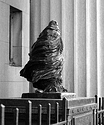keithwms said:
But your opinions are greatly appreciated, I assure you.
Likewise, Keith. Your posts are long but balanced usually, and I enjoy reading them.
keithwms said:
I totally agree. That said, there are differences between the two kinds of grain. And it seems to me that a lot of time and research dollars went into killing grain... to what end, I wonder? Obviously, we like more resolution, but that's really only an issue for 35mm.
See, I don't even think in those terms. But I'm glad different people like different things. It would be boring if we all liked the same things. I guess since we are our own worst critics, it's up to each and every one of us to figure out what works, and what doesn't. But I still think there is way too much emphasis on film, and way too little emphasis on how to use it properly.
keithwms said:
The grain itself will not be visible per se, and arguably it wasn't all that obvious for many enlargements too. But the grain is part of an edge contrast effect that is definitely there, even in contacts. To me, the fp4+ contacts have gloriously smooth tonality, but the edge is still there. That could of course just be me and my own bias/prejudice, but I don't think so... for I am a recovering lp/mm wanker too; in fact, I am a bit embarrassed by some of my first forum posts on analogue photography a few years ago

It's up to each and every one of us to determine how important that is to us. To me it's a non-factor. I don't even think about it. How different people can be!
keithwms said:
Anyway, obviously, there was never any guarantee that the highest resolution, smoothest tone, sweetest smelling and most expensive film would produce the best photographs! That is for us to attempt.
I think you are 100% correct. Numbers don't make photographs, but passion, soul, history, knowledge, interest, curiosity, attitude, skill, practice, senses, and lots of other things that are infinitely more important.
I printed a lot of 35mm Plus-X negatives for a local artist a few years back. In fact, he mixed Tri-X and Plus-X. I printed everything on 11x14" Ilford Warmtone paper. Customer wanted a warm tone, but neutral color, so I selenium toned to neutralize the slightly green cast. The way he shot and processed the two films meant that their tonality were incredibly alike, and at that modest size I usually could only tell a difference between the two by sticking my nose right up to the print surface and examine the grain, which I got absolutely no pleasure from. Standing back at a proper viewing distance it wasn't like the prints were categorized automatically as Plus-X / Tri-X, but they looked beautifully cohesive and 'together' as a single group of prints. That should tell you something about the importance of film choice versus simply being damned good at using them.
Plus-X is gorgeous film, and so are many others. Smoke 'em if you got 'em. Freestyle still has a bunch of it in 35mm, both as Kodak's own brand and Arista Premium 100.










 sorry!
sorry! But your opinions are greatly appreciated, I assure you.
But your opinions are greatly appreciated, I assure you.
